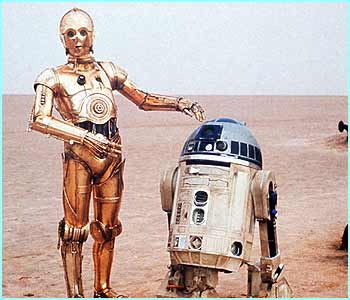A Brief History of Science Fiction Film Music
References, Links, and Works Cited
Created by Jessica Rooney
Last updated 5/1/06


A Brief History of Science Fiction Film Music
1927-1930s: Synch-Sound and the Hollywood Epic
In the mid 1920s there had been some experimentation with the inclusion of sound with film images, but because of problems with synchronization and audio volume and fidelity most film studios did not see sound film as anything other than a “novelty act” (“Sound Film”). However, film editing techniques were soon developed to solve these problems and films such as The Jazz Singer (1927), Lights of New York (1928), and Steamboat Willie (1928) (the first cartoon with sound) created a public demand for “talkies.” This public want grew so great that synch-sound film became a standard procedure by 1928 (“Sound Film”).
By the 1930s the age of the Hollywood high-cost epic films had dawned. Large production budgets, glamorous actors and actresses with closely watched public lives, and the development of color and other special effects allowed film to become a true escapist spectacle for an audience. This heightened sensory experience was heavily reliant upon music. Music was now regarded as “integrated enhancement” of themes and narrative of film (Hayword 6), and film composers were beginning to experiment with how music could not only accompany a visual scene but work on its own to create audience reaction. These new techniques included increasing dissonance to signify suspense, drama, and violence, creating tension through “atmospheric chromaticist passages” (Hayward 6), the use of excitement enhancing passages such as “chase” music, and the development of Wagnerian leitmotifs for main characters and ideas (Hayward 6)
Yet even in this exploratory time in film music, the music of science fiction films remained essentially conservative. Films such as King Kong (1933), Bride of Frankenstein (1935), and Phantom Empire (1935) largely drew on conventions of Western, tonal orchestral music. These films did not attempt to find musical or sonic signifiers that “could evoke the various futuristic, scientific, and/or alien themes, narrative, and associations of the science fiction genre” ( Hayward 7). This is especially unusual considering that the range of music instruments had grown with the development of early analogue synthesizers, and the early 20 th century is known for its experimentation in sound and music in both the ‘fine’ and popular musical fields (Hayward 7).
